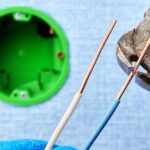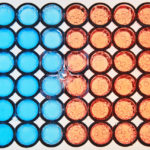Yevgeniy Grigoryev
Yevgeniy has a PhD in Systems genomics, immunology, molecular biology from Scripps Research. He is currently a lecturer at the City College of New York and a freelance science writer specializing in communicating science to diverse audiences. My extensive background in scientific research, science writing and journalism allows me to translate various scientific topics into clear, concise, and accurate language that appeals to a general audience. As I science journalist with Nature Medicine, I honed my skills as an effective communicator and writer, interacting with many scientists across many different fields, including policymakers, clinicians, and technology experts. Moreover, my experience as a science writer with the BiteSizeBio online scientific community allows me to promote and encourage communication among different sectors of the scientific community and cultivate new relationships within the community.
Articles by Yevgeniy Grigoryev
Discover ways to perform total RNA extraction from TRIzol to kit-based and even old-school methods.
This is the first installment in the DNA microarray series where I will introduce the technology and explain the basics.
Need to brush up on your alternative splicing knowledge? We’re here to help with our guide to this splicing mechanism.
Do hemocytometers look scary and complicated with their multiple tiny squares, boxes, and grids? Take a look at our article and see how easy it actually is to use a hemocytometer.
During your time interviewing for different jobs, more likely than not you will encounter employers who conduct behavioral interviews. What is a behavioral-based interview, you may ask? Behavioral interviewing is supposed to uncover your past job-related behavior to predict how you will behave in the future. It is based on the assumption that your past…
It is the black death of cell culture. Scientists don’t dare utter its name and many a graduate student has fallen victim to its indiscriminate menace. These stealthy anarchists infiltrate quietly but deliberately until their numbers swell and then they attack in strength, overwhelming their victims before they can put up a fight! What is…
Unlike DNA, which can last for eons, RNA is a fragile and degradation-prone cousin. After working with RNA for a while, one becomes quite paranoid about handling RNA because even a single sneeze or drop of saliva can potentially affect your results. The reason is that there are enzymes called RNases that specifically target and…
In my previous article on DNA gel extraction, I explained how most commercially available DNA gel extraction kits work. However, there was a time before our society was blessed with these convenient marvels of technology and scientists had to summon the gods of “Crush and Soak”. This method has been proven for millennia, as people…
Isolating pure DNA is key to many downstream applications for molecular biologists. Isolating large quantities of pure DNA used to be a laborious task. But thanks to commercially available kits, older methods have been streamlined to allow efficient recovery of pure DNA. In this article, I will talk about a method called DNA gel extraction,…
If you want a more efficient, cheaper way to do bacterial transformation, you are definitely going to like this article.
MicroRNAs (miRNA) are short, non-coding RNAs involved in post-transcriptional silencing of gene expression. miRNAs can be associated with exosomes and can function as cancer-specific biomarkers. This, coupled with the fact that they are stable in plasma and serum makes them valuable diagnostic tools, as long as they can be reliably isolated from the serum and…
Alternative splicing is a highly orchestrated process that uses a multitude of regulatory mechanisms. Splicing specificity involves a precise interaction between cis- and trans-acting regulatory elements, and factors that disrupt these interactions can result in aberrant splicing. There are multiple ways in which mutations can affect splicing fidelity: A point mutation in the cis-acting splice…
Alternative splicing events often occur in a spatiotemporal manner, and some are regulated by alternative splicing regulators, with striking variation across tissue types and developmental stages. Alternative splicing events are often differentially regulated across tissues and during development, as well as among individuals and populations, suggesting that individual isoforms may serve specific spatial or temporal…
Mammalian cell transfection is a technique commonly used to express exogenous DNA or RNA in a host cell line (for example, for generating RNAi probes). There are many different ways to transfect mammalian cells, depending on the cell line characteristics, desired effect, and downstream applications. In this article, I will review the different methods of…
‘Would you tell me, please, which way I ought to go from here?’ ‘That depends a good deal on where you want to get to,’ said the Cat. ‘I don’t much care where,’ said Alice. ‘Then it doesn’t matter which way you go,’ said the Cat. From Alice’s Adventures in Wonderland. According to a…
Epigenetics is the study of heritable changes in the phenotype of a cell or an organism that are not encoded by the genome (hence epi which means ‘above’ in Greek, and genetikos which means ‘origin’). In this article, we’ll discuss DNA methylation, a common epigenetic modification: what it is, how to detect it, and how…
“No one can whistle a symphony. It takes a whole orchestra to play it.” – H.E. Luccock In my previous article on “Starting your PhD the right way”, I already mentioned the importance of using your department’s resources to your advantage. In this article, I will expand on how to use your department to the…
You have just finished your undergraduate studies, or perhaps you have been working in the field for a while, you are full of energy and zest and you want to prove to the world that you are carved from the right stone to pursue PhD studies. Going to graduate school is a very important, potentially…
RNA interference (RNAi) may have originated as a defense mechanism to protect cells against foreign genes introduced by viruses. This concept has since been put to use to create a powerful experimental tool for investigating gene function in organisms. Small-interfering RNA (siRNA) libraries for investigating genome-wide function can be produced by chemical synthesis of probes…
“While I dance I can not judge, I can not hate, I can not separate myself from life. I can only be joyful and whole. This is why I dance.” – Hans Bos While in graduate school, I tried really hard to find an activity that would allow me to disassociate my body from my…
Previously I introduced the DNA microarray technology and described the principle behind it: hybridization between the nucleic acid sequence from the biological samples being examined and a synthetic probe immobilized and spatially arrayed on a solid surface, the microarray. In this article, I will explain how these probes are designed and positioned on the array. I…














